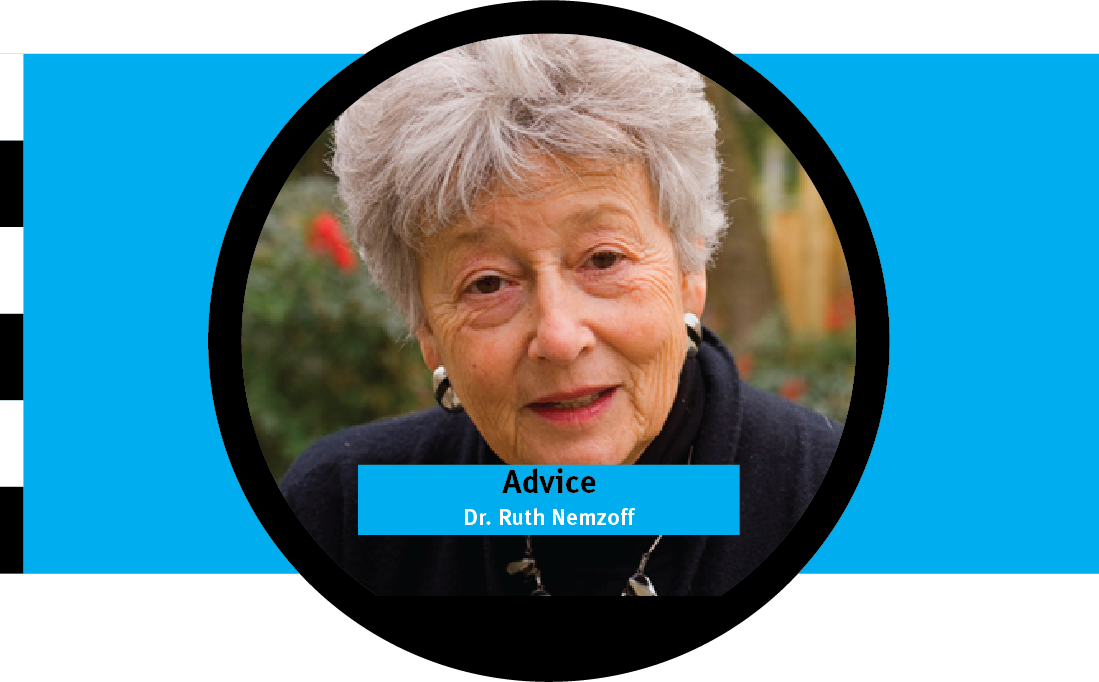It’s that time of year again when the Gallup organization does their thing about a topic near and dear to my heart: happiness.
Some spoiler alerts, the United States dropped out of the top 20 countries (The U.S. is now 23rd), a Slavic country took home the top prize-again. And who knew, our bubbe is a major source of happiness across the globe! (Bubbe first, last and always. For those not in the know, bubbe is an endearing reference to your grandmother).
The latest Gallup findings are different from years past. They’re getting more organized. The latest findings are available online (with your having to give them your email, the reason why you want the information, who you are in the world like a student, supervisor, or executive) and your organizational name. Oh well, I thought they had that already, so I filled in the blanks.
There are eight chapters in the new Gallup study, with an executive summary (Chapter 1) that offers an overview and then seven chapters which provide the following.
– Chapter 2 — Caring and sharing, global trends in happiness and kindness.
– Chapter 3 — Sharing meals with others. How household size and family bonds relate to happiness.
– Chapter 4 — Living with others. How household size and family bonds relate to happiness.
– Chapter 5 — Connection with others. How social connections improve the happiness of young adults.
– Chapter 6 — Supporting others. How prosocial behavior reduces deaths of despair.
– Chapter 7 — Trusting others. How unhappiness and social distrust explain populism (this is a direct connection being made between happiness and politics, which is particularly revealing and suggests why we are having a newfound support for autocracy in many countries).
– Chapter 8 — Giving to others. How to convert your money into greater happiness for others.
It would be too much for this column to go into detail of all the chapters, so I suggest for a deeper understanding of Gallup’s analysis you read the original source. In the meantime, here are some highlights.
A happiest country on earth article and critique of the Gallup report comes from the work of Jon Clifton and Julie Ray, (not the Gallup report itself — and a good synopsis on its own — a “Cliff notes” version for you Baby Boomers). In their March 2024 article in the World journal, “What’s the Happiest County on Earth? It’s not Finland if you’re under 30 or over 60,” Jon and Julie found the following:
“The (Gallup) report, which ranks countries by age group for the first time, shows the U.S. decline is at least partly attributable to Americans under age 30 feeling worse about their lives. The U.S. still ranks in the top 10 countries for those 60 and older, with a score of 7.258 out of 10. But for those under 30, it ranks 62nd, with a score of 6.392.
While the U.S. lost ground, Finland retained its crown as the happiest country in the world for the seventh straight year. But it wasn’t No. 1 for those under 30 or over 60. Lithuania and Denmark, respectively, took those honors.”
Chapter 2 of the World Happiness Report 2024, titled “Caring and Sharing: Global Analysis of Happiness and Kindness,” explores the relationship between benevolent behaviors and happiness across the globe. The chapter is authored by John F. Helliwell, Lara B. Aknin, Haifang Huang, Max Norton, Shun Wang, Felix Cheung, Yeeun Archer Lee, and Sara Konrath, with assistance from various experts.
This chapter addresses benevolence ranking including six measures (donating, volunteering, helping strangers, and expected wallet return by neighbors, strangers and police officers). The return of wallets has been a widely used social experiment to determine empathy and helping behaviors. The lost wallet findings were written up in the Scientific American Journal by Lydia Denworth in June 2019 in an article titled “Missing Wallets with More Cash are More Likely to be Returned.”
Lydia Denworth had written about Dr. Denworth’s research, his study was about the planting of 17,000 wallets with money to see who and where the most wallets were returned to their owners. He found similar patterns among most of the 40 countries involved and measured how many were reported back to their owners. Rates varied according to Dr. Denworth from 14% in China to 76% in Switzerland. The study also found in 38 out of 40 countries, the more money a wallet contained, the more likely people were to return it. One of the original leaders of the study along with Dr. Denworth, Dr. Michel Marechal of the University of Zurich said, “people are a bit too pessimistic in their view of human behavior.”
William Shakespeare said it this way “Like ‘mercy’ in Shakespeare’s Merchant of Venice, caring is ‘twice-blessed’ — it blesses those who give and those who receive.”
Chapter 3 of the Gallup study in 2025 explores the relationship between sharing meals and social connections, emphasizing the importance of social ties for human health, happiness, and prosperity. Social connections contribute to higher levels of life satisfaction, lower stress, and better physical health. Conversely, social isolation and loneliness are linked to negative life outcomes, including higher rates of disease and shorter life expectancies.
The chapter documents stark differences in meal-sharing frequencies across regions and countries. Latin America and the Caribbean lead in meal sharing, while South Asia reports the lowest levels. The authors note that these differences are not fully explained by income, education, or employment.
Virginia Woolf said it this way “One cannot think well, love well, sleep well, if one has not dined well.”
Chapter 4 is about living with others and how household size, family bonds relate to happiness and where bubbe fits in. Authored by Mariano Rojas, Lina Martínez, Gerardo Leyva Parra, Roberto Castellanos, and Margarita Tarragona, the chapter explores the intricate relationship between household size, family configurations, and happiness.
The chapter compares household sizes in Latin America and Europe, revealing substantial differences. Latin American countries have larger household sizes, which may contribute to higher wellbeing despite lower GDP per capita. The authors suggest that larger households foster positive social interactions, partially counterbalancing economic differences.
Using surveys from Mexico, Colombia, and Europe, the chapter analyzes the relationship between household size and happiness. An inverted U-shaped relationship is observed, with the highest life satisfaction reported in households with four to five members. Regression analyses confirm this relationship, suggesting that the current average household size in Mexico and Europe is suboptimal from a wellbeing perspective.
Chapter 5 points out that young adults globally face increasing mental health challenges, and it also unfortunately shows a decline in wellbeing among Americans under 30.
On the positive side social ties buffer stress and enhance mental health, but loneliness as written by Dr. Vivek Murthy, the 19th and 21st United States surgeon general (“Our Epidemic of Loneliness and Isolation 2023”), has risen among this population, which was exacerbated by the COVID-19 pandemic.
Social connection is vital for young adults’ wellbeing, buffering stress and enhancing subjective wellbeing. However, social disconnection is prevalent, with 19% of young adults reporting no one to count on for support in 2023, a significant increase from 2006.
Early social ties during young adulthood have long-lasting effects, reducing depressive symptoms and increasing the likelihood of flourishing. Many young adults underestimate their peers’ empathy, leading to missed opportunities for meaningful relationships. Interventions can bridge this empathy perception gap, promoting social connection and expanding social networks.
To put another way, according to C.S. Lewis “Friendship is born at that moment when one person says to another, ‘What! You too? I thought I was the only one.”
Chapter 6 supports the case for prosocial behavior. Prosocial behavior is defined as actions done for the benefit of others and is a measure of social capital. It contributes to limiting deaths of despair by improving health, happiness, sense of purpose, and psychological flourishing. Prosocial behavior strengthens social networks, increasing access to social support and information, which improves coping strategies and mitigates stress. It also fosters self-esteem, which serves as a protective factor against life challenges. The benefits extend beyond direct effects, contributing to social capital by fostering trust, shared values, and cooperative norms.
According to the Gallup 2025 report significant changes in prosocial behavior. In 2019, on average, 31.1% of respondents engaged in prosocial behavior, with 45.3% helping a stranger, 29.9% donating money, and 18.2% volunteering. Prosocial behavior is more frequent in high-income countries. Over the period 2005–06 to 2019, engagement in prosocial behavior decreased in most countries, especially in high-income countries. The decrease was steeper for women than men, particularly in helping others.
Chapter 7 addresses politics and it isn’t pretty. The chapter discusses the rise of anti-system political victories in Western countries, such as Brexit and our recent election here in the United States. The chapter attributes this trend to a growing resentment of the system, driven by economic insecurity, globalization, and cultural backlash against modernity and immigration.
The chapter postulates the following:
Decline in happiness and social trust in Europe and the US explains the rise in political polarization and anti-system votes.
Subjective attitudes like life satisfaction and trust play a greater role in shaping values and voting behavior than traditional ideologies or class struggle.
Unhappy people are attracted to political extremes; low-trust individuals lean towards the far right, while high-trust individuals lean towards the far left.
The chapter highlights that low life satisfaction is related to distrust in institutions and preference for anti-system candidates. Social trust further explains the orientation towards the political spectrum, with far-left voters having higher social trust and far-right voters having lower social trust.
Chapter 8 of the World Happiness report is titled “Giving to others: How to Convert Your Money into Greater Happiness for Others.” It is a pitch by the authors Michael Plant, Joel McGuire, Samuel Dupret, Ryan Dwyer, and Ben Stewart from the Happier Lives Institute, which emphasizes the importance of effective giving and introduces the concept of wellbeing-years (WELLBYs) as a metric to measure the cost-effectiveness of charities.
The chapter shows that the cost-effectiveness of charities varies significantly, with some being hundreds of times more effective at increasing happiness per dollar than others. By funding more cost-effective charities, we as donors can multiply our impact without additional costs. The authors highlight the lack of published evaluations of large, well-known charities.
This last chapter is an attempt by the authors to inspire us to take action to improve world happiness through charitable giving. The Happier Lives Institute rejects the claim that “money can’t buy happiness,” showing that money can indeed buy happiness for others by funding the most effective charities.
Anne Frank put it this way “no one has ever become poor by giving.”
Thanks for reading the column. Feel free to share it with others and invite them to read the column in the future. Please go to the AI website (www.americanisraelite.com) and post a comment.
Questions? Suggestions? Send me an email at psychology@americanisraelite.com. Be well. See you here next month.





